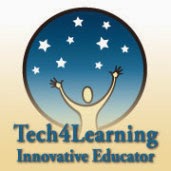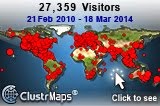1. Apps for Student Blogging
We have experimented, thus far, with three apps for student blogging: Wordpress, Chrome and Safari. All of them have great features, as well as limitations. One thing we've learned the hard way is not to use the camera from within the blog post. It is best to take the photos from outside of the blogging app and then import from camera roll.
I'm amazed at how quickly the students are beginning to fluently use multiple apps to achieve a task. When 5th graders, for instance, wanted to add "Choose Kind" badgesas sidebar widgets, they quickly discovered that it made sense to use the Wordpress app to upload the image, but it required switching to one of the browser apps to add the code to a text widget.
Note: Our student bloggers would love to connect with other student bloggers, and we would welcome readers and comments.
2. Apps for Classroom Management
After carefully reviewing the features of Class Dojo, I decided against using it for behavior management. Many teachers are thrilled with it, though, so it might be worth a try. So what apps am I using? I am enjoying plugging my iPad into speakers (necessary to hear the sound) and using the free app, Tibetan Bowls, as a lovely chime to get students' attention. I've also been experimenting with using mellow music via Pandora, as thinking music while students are writing. Sometimes the music adds a nice element of calm to the room, although some students find it distracting.
3. The camera!
The camera is a no-brainer. Of course, we use the camera constantly to document and capture. But here is a fun Pinterest-inspired way I've used the camera to practice our "Give Appreciations" norm and to create something for students who are celebrating birthdays. I simply email the photo to the student (and his or her parent) to save and enjoy.
4. Words With Friends
I put Words With Friends on our app list, thinking that we would use it as part of Daily 5 word work. I haven't even started introducing Daily 5 yet, but students have discovered and are loving WWF. In fact, it's become a class wide obsession.
I quickly made three rules: no using the chat feature during school, no logging in with Facebook (as 4th and 5th graders should not have Facebook anyway) and no choosing "random opponent." I love that they are so focused on playing around with the ways letters combine to form words. Fun stuff.
5. Apps for Creative Assessment
What are students actually learning? How well do they understand the concepts? Assessment will be one of the most central ways I envision using iPad apps this year. When students create, I get excellent feedback on how well they actually understood a concept. This week, as part of our school's implementation of the 7 Habits of Highly Effective People, we learned Habit 1: Be Proactive. After our readings and discussions, I wanted to understand how well students had integrated this concept into their own schemata. 4th graders used Pixie and 5th graders used Comic Maker to demonstrate their understanding of the concept of being proactive.



























